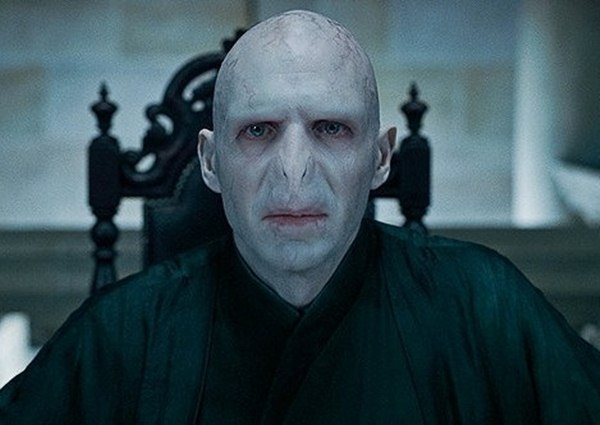The Dark Art of Uncertainty
 Engineers hate uncertainty. (More precisely, it scares us to death.) And our role in the company is to snuff it out at every turn, or so we think.
Engineers hate uncertainty. (More precisely, it scares us to death.) And our role in the company is to snuff it out at every turn, or so we think.
To shield ourselves from uncertainty, we take refuge in our analyses. We create intricate computer wizardry to calm our soles. We tell ourselves our analytic powers can stand toe-to-toe with uncertainty. Though too afraid to admit, at the deepest level we know the magic of our analytics can’t dispatch uncertainty. Like He-Who-Should-Not-Should-Be-Named, uncertainty is ever-present and all-powerful. And he last thing we want is to call it by name.
Our best feint is to kill uncertainty before it festers. As soon as uncertainty is birthed, we try slay it with our guttural chant “It won’t work, it won’t work, it won’t work”. Like Dementors, we drain peace, hope, and happiness out of the air around a new idea. We suck out every good feeling and reduce it to something like itself, but soulless. We feed on it until we’re left with nothing but the worst of the idea.1
Insidiously, we conjure premonitions of mythical problems and predict off-axis maladies. And then we cast hexes on innovators when they don’t have answers to our irrelevant quandaries.
But our unnatural bias against uncertainty is misplaced. Without uncertainty there is no learning. Luckily, there are contrivances to battle the dark art of uncertainty.
When the engineering warlocks start their magic, ask them to be specific about their premonitions. Demand they define the problem narrowly – between two elements of the best embodiment; demand they describe the physical mechanisms behind the problem (warlocks are no match for physics); demand they define the problem narrowly in time – when the system spools up, when it slows down, just before it gets hot, right after it cools down. What the warlocks quickly learn is the problem is not the uncertainty around the new idea; the problem is the uncertainty of their knowledge. After several clashes with the talisman of physics, they take off their funny pointy hats, put away their wands, and start contributing in a constructive way. They’re now in the right frame of mind to obsolete their best work
Uncertainty is not bad. Denying it exists is bad, and pretending we can eliminate it is bad. It’s time to demonstrate Potter-like behavior and name what others dare not name.
Uncertainty, Uncertainty, Uncertainty.
 Mike Shipulski
Mike Shipulski
Have you ever read “RISK MANAGEMENT IN A DYNAMIC SOCIETY” by Jens Rasmussen (1997)? It gets a little squirrelly at the end but the concept is on the money. He basically explains risk modeling in terms of a broadening of the degrees of freedom within a network that is relatively tightly constrained. The invisible domino affect leads to an event that could probably only be understood in hind sight, the is prevntable.
Hi Mike,
I totally agree with this view! the age of innovation is difficult to maintain under the current mantra of fear and timid decision makers. look back at the Edwardian times and you will see new ideas and designs cascading into the (uneducated and gullible) public domain. we should look to these times and learn how to bring back the spirit of pioneering design and development. We should however learn from the mistakes of the past – remember Radox relaxing bath salts anyone? yes I may hear you say maybe not the one with real RADON though!
Over the years I have seen ideas fall away and die due to lack of support for a truly innovative solution – for fear of failure and an upward spike in the development costs, it is the total cost of taking a product to market against income over time that is “he who should not be named” . I have never seen a truly new project go the right way on this – calculation. Incremental improvement can bring incremental increases in profit margins but it also hold back new ideas that the competition will eventually come up with and steal away your market.
True R&D is almost dead in the big companies (many of which grew to be big on the exploitation of innovative products), daring innovation is now mostly back in the realm of the hard pushed and financially squeezed companies of less than 100 employees that are forging ahead with the bright new future, this is where intelligent (and knowledgeable) investment is needed.
Not like the push of the Conservative Government in UK of the 1980s where banks were encouraged to lend to small businesses with a government guarantee against failing enterprises – the problem with this is the small guys had to stump up the costs of investigation into the business and the business plan (no complaint here) but then the same institution would insist on “expert” opinion of the product – stumbling block every time! £20 to 30k gone before you get going and the result was often a “No Way!” from the bank/investment company.
The patent system often fails the small guy with good ideas and rewards the big company with the financial and legal muscle to shut out any future innovation on near related ideas.
What the world needs is to find a way to encourage some “out there” thinking enterprises, especially in the fields of transport, power generation, materials, communications and most of all financial support and encouragement of innovative enterprise and individuals.
Peter J Clark.